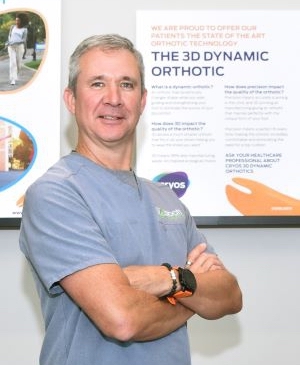Heel pain is something that affects a lot of people, and it can significantly impact your day-to-day life. Even simple things like walking around the house or standing at work can become uncomfortable. The good news is that most heel pain is treatable once you understand what’s causing it. At Abbott Foot & Ankle Clinic, we work with many patients with heel pain, and we help them figure out the cause and get back to living pain-free.
Plantar fasciitis is by far the most common reason people experience heel pain. This happens when the thick band of tissue along the bottom of your foot, called the plantar fascia, becomes irritated or inflamed. Pain is usually worse when you first get up in the morning or after sitting for a while, and it often feels like a sharp stab in your heel when you take your first steps. Plantar fasciitis can affect anyone, but it’s especially common in active people who run or play pickleball, people who spend a lot of time on their feet, and those with flat feet or high arches. Treatment usually starts with icing the area several times per day for 10-15 mins, stretches for your calves and the bottom of your feet, wearing supportive shoes and custom orthotics to support your arch. You should avoid walking barefoot for now. In some cases MLS laser therapy or cortisone injections help to reduce inflammation and promote healing. We look at each person individually to determine the best treatment plan.
Another common cause of heel pain is heel spurs. These are bony growths on the bottom of the heel bone. Not everyone with a heel spur has pain, but when they do, it’s often linked with plantar fasciitis and can make discomfort worse. Heel spurs are most common in people who are overweight, stand for long periods, or put chronic stress on their feet. Treatment usually focuses on reducing pressure with orthotics, stretching exercises, and MLS laser therapy. Surgery is rarely needed but is an option if nothing else helps.
Achilles tendinitis affects the back of the heel. It happens when the Achilles tendon, which connects your calf muscles to your heel bone, becomes inflamed. The pain usually gets worse with activity, especially running, jumping or the quick start and stop motions that occur in tennis and pickleball. Treatment often includes rest, activity modification, and exercises to strengthen the calf muscles. MLS laser therapy is usually needed to help speed healing, and sometimes heel lifts or orthotics are used to reduce strain on the tendon.
Bursitis is another source of heel pain. This occurs when a small fluid-filled sac, called a bursa, becomes inflamed. Bursitis usually causes swelling and tenderness at the back of the heel and can happen from repeated stress, running, or wearing shoes that rub against your heel. Treatment involves reducing inflammation with ice or anti-inflammatories, wearing properly fitted shoes, using padding or orthotics, and in some cases MLS laser therapy. Stretching and strengthening exercises may also help.
Sometimes, heel pain is caused by nerve problems, like tarsal tunnel syndrome. This happens when a nerve in your foot gets pinched or irritated, causing sharp, burning, or shooting pain. It’s more common in people with flat feet, high arches, previous ankle injuries, or certain health conditions. Treatment often includes orthotics to support your foot, stretching and MLS laser therapy. In select cases, minor surgery may be needed.
Stress fractures are small cracks in the heel bone caused by repeated pressure. These can be painful, especially when walking or running, but often improve with rest. They’re more common in athletes, runners, or anyone increasing their activity too quickly, as well as people with weakened bones. Treatment usually involves resting, wearing supportive footwear or a cast boot, and sometimes custom orthotics. MLS laser therapy can also help the healing process for minor stress fractures.
Finally, plantar warts are an often-overlooked cause of heel pain. These are caused by the human papillomavirus (HPV) and appear on the bottom of the foot, sometimes right on the heel. Plantar warts can be painful because pressure is applied to them when you walk. They may have tiny black dots and sometimes grow in clusters. They’re common in children, people who walk barefoot in communal areas like pools, and anyone with a weaker immune system. Treatments include Swift microwave therapy, cryotherapy, topical treatments, and in some cases, orthotics or padding to reduce pressure while the wart heals. Early treatment is important to relieve pain and prevent the warts from spreading.
Heel pain can sometimes improve with simple stretches or supportive shoes, but persistent pain should always be checked by a chiropodist or podiatrist. At Abbott Foot & Ankle Clinic, we provide thorough assessments and personalized treatment plans using orthotics, MLS laser therapy, and other advanced treatments to help you get back on your feet.
Preventing heel pain is possible too. Supportive shoes, gradual increases in activity, daily stretching, avoiding walking barefoot on hard surfaces, and maintaining a healthy weight all make a difference.
If your heels are hurting, don’t wait! The longer you wait, the longer it takes to heal. Schedule an assessment with us today and let us help you walk comfortably again. Many people are not aware that their insurance benefits may cover most or all of the services required to resolve your heel pain.

